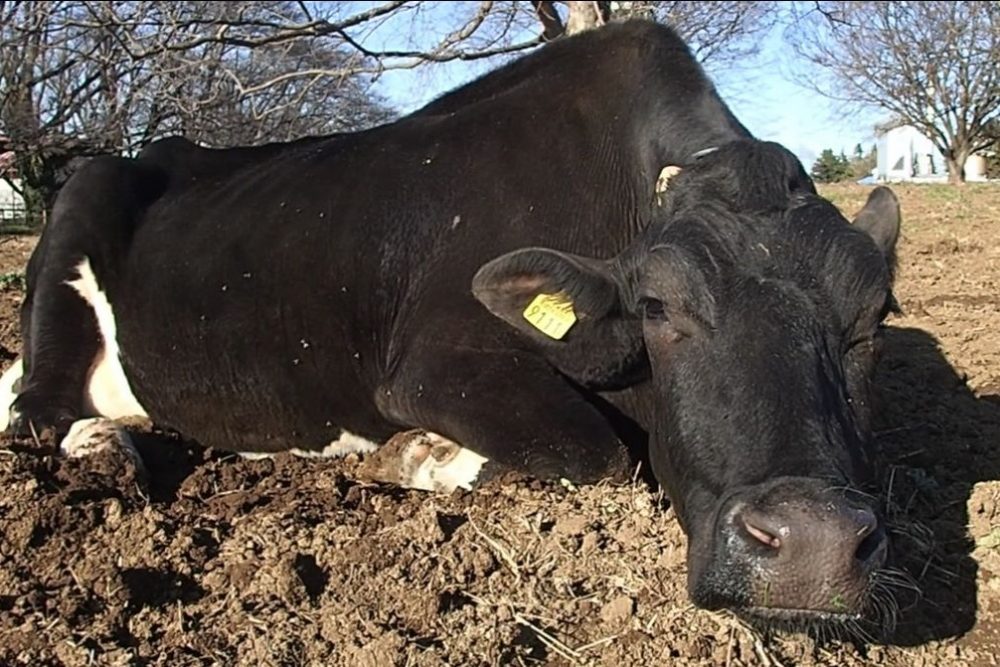Mystical 'Air Shrine' in Asahi Town Conveys the Universal Value of Clean Air
Home to the world's only shrine built to the air, Asahi Town in Yamagata Prefecture is speaking out about the importance of clean air, both at home and abroad.

このページを 日本語 で読む
Quietly tucked away deep in the mountains of Asahi Town in Yamagata Prefecture is the world’s only shrine to deify air: Kuki Jinja, or 'Air Shrine'.
Although designated a shrine, its roots are not strictly religious. Rather, it was built as a monument to the air after an elderly gentleman of the town questioned why there were no shrines that deified air, a vital element for all living creatures, even though there were shrines dedicated to gods of fire and water.
Asahi Town designated UN World Environment Day (June 5) as 'Asahi Town Air Day' by ordinance to spotlight the importance of air. The town is also calling for the designation of June 5 as a national holiday to provide all people in Japan with an opportunity to reflect on air quality and the global environment.
Sensing the Air
Asahi Town (pop. 6,300) is set in a rich natural environment surrounded by the Asahi Mountain Range, known as the Alps of Tohoku, including the O-Asahidake (1,871 m) and Ko-asahidake (1,648 m) peaks of Mt. Asahi and Mt. Shirataka.
As we emerged from hiking up the 200-meter trail through the beech forest at the foothills, a path once trod by mountain priests, a stainless steel mirrored plate began to take shape in the open space.
The crystal clear, bright blue sky and sunlight filtering through the gently swaying trees in the beech forest were reflected in the glassy, mirror-like main shrine.
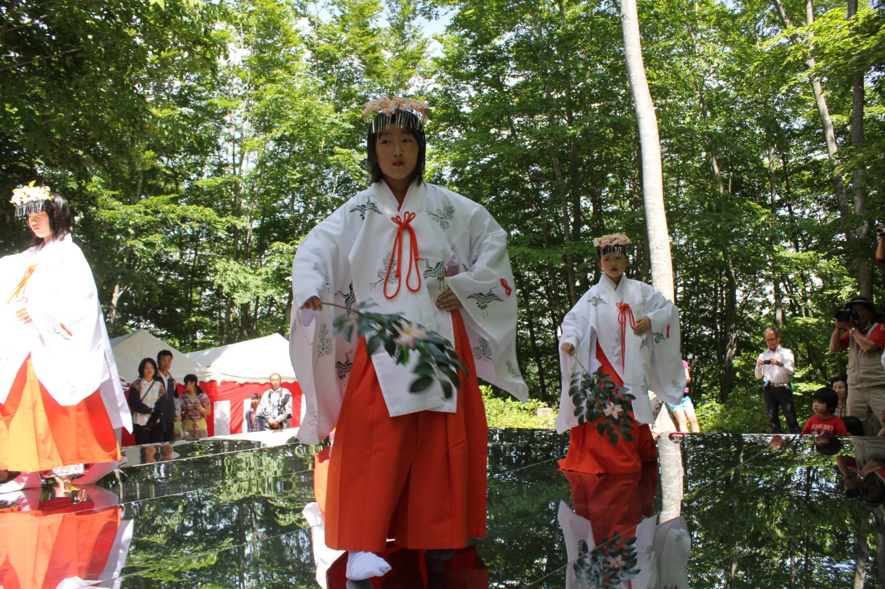
“Please go in.”
A town official guides me as I climb down the ladder about three meters. In the candlelight below, twelve unglazed wide-mouthed jars (kame) emerge from the darkness. I strain my eyes to see inside them, but they are empty because it is the very air inside the jars that is sacred.
I clap my hands together in prayer. The air inside the jars reverberates an echo. I can actually sense the air.
Asahi Town holds an 'Air Festival' on the weekend closest to the June 5th 'Air Day' holiday. Only on those two days once a year, the interior space under the main shrine is opened to the public.
As a reporter stationed in Yamagata Prefecture for three years from 2011, I attended the festival each year, wanting to feel this full-body air experience.
One Man's Idea Becomes a Reality
The origin of the Air Shrine dates back 50 years. At the time, Mr Chiyoo Shirakawa, a local farmer, proposed building a shrine. Declaring that he "never tired while working in the beech forest," Mr Shirakawa noted the need "to be thankful for the forest that produces the air we need to live".
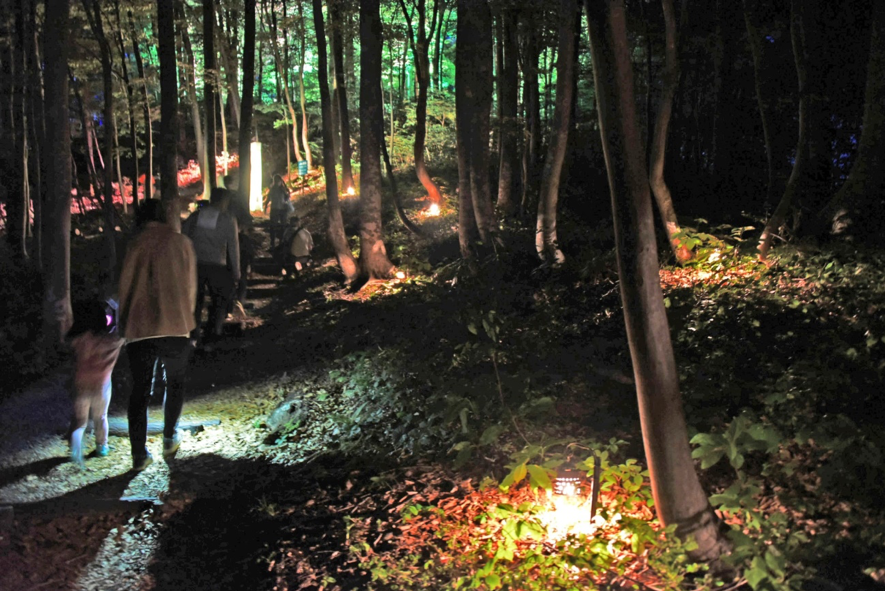
Even so, few gave any serious consideration to his fanciful ideas on revitalizing the town, which also included training geisha in the remote mountains, and his proposal faded back into the shadows. Mr Shirakawa died at age 73 in 1986.
But twelve years later, his idea for an Air Shrine was brought back to life.
A town official heading up a project to build a recreational resort based on the 'Family Travel Village' concept placed a proposal on the then mayor’s desk. The idea was to build a one-of-a-kind Air Shrine. However, concerns about the separation of government and religion kept the mayor from getting on board with the proposal.
Despite this setback, the determined town official opted to consult with Mr Toshio Sugai, president of a construction company that had successfully planned community events to revitalize the town. Mr Sugai shared an affinity with Mr Shirakawa’s idea and started to put the wheels in motion to build the Air Shrine.
Since the town government was unable to build the shrine, Mr Sugai gathered volunteers from the local community to set up an association to support the proposed shrine and began calling for donations.
Rising Interest in the Environment
Before his death in 2021, one of the association members, Mr Seiichi Takigawa, spoke with a reporter, recalling the difficulties faced in trying to get the shrine built. "Everyone was busy trying to put food on the table. They thought the idea was outrageous. They asked me what was the point of building a shrine to the air, and what was in it for them. I was stumped for answers."
At that time, poor air quality caused by pollution was becoming an issue of concern. The United Nations Earth Summit was due to take place in Rio de Janeiro, Brazil in 1992, raising media interest in the Air Shrine. Donations, mainly from town residents, began to roll in and reached approximately 50 million yen in total.
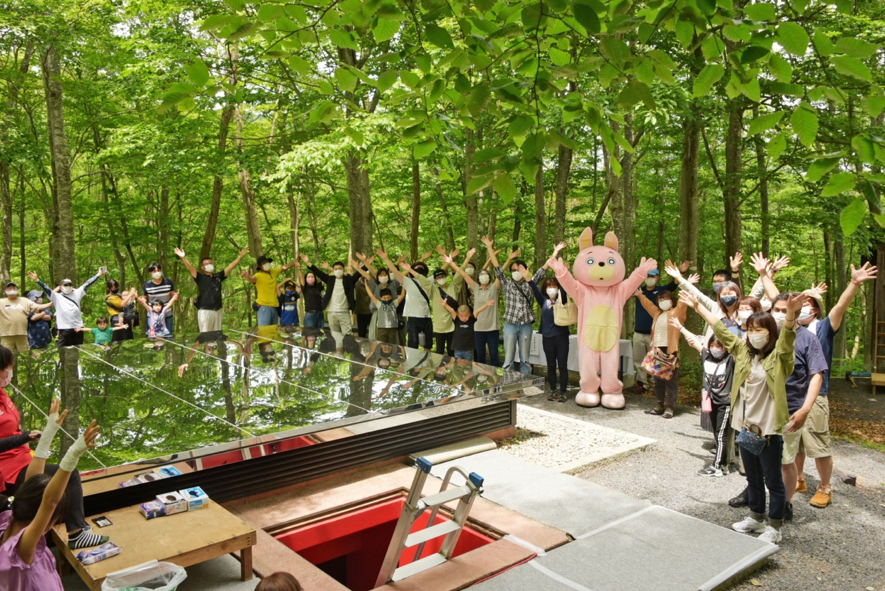
A nationwide competition was launched to select the design. Then in 1990, 17 years after Mr Shirakawa first dreamed up the idea, the world’s only Air Shrine became a reality.
Then Director General of the Environment Agency (now the Ministry of the Environment), Ishimatsu Kitagawa, was in attendance at the ceremony to mark the completion of the shrine. He also introduced the Air Shrine at an international conference in Geneva.
New Challenges
The meltdown at the Fukushima Daichi nuclear power plant following the Great East Japan Earthquake in March 2011 released massive amounts of radioactive materials into the air. Prefectures neighboring Fukushima also felt the effects, and Yamagata was no exception.
In 2020, the Air Festival was cancelled due to the COVID-19 pandemic, then restarted in 2021 but on a much smaller scale. While the festival was again scaled back in 2022, the town did try something new. It lit up the shrine at night between June and August.
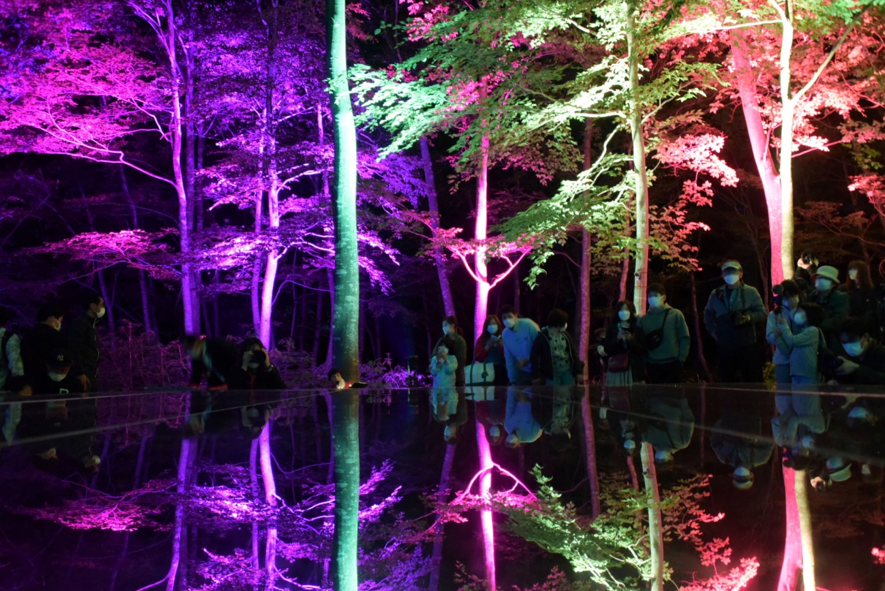
I visited Asahi Town for the first time in several years in July 2022, and hiked up to the Air Shrine at night. The mountain path was also lit up, and the lights at the shrine enveloped it in a dream-like atmosphere.
The trees of the beech forest and the night sky were reflected in the shrine’s still, stainless steel mirror-like plate, with the LED lights changing color every few minutes.
The forest at night shows a completely different visage to what it looks like during the day, and I felt an instinctive sense of gratitude for the air, mountains and nature that keep us alive.
Expanding Opportunities
In 2022, Yamagata Prefecture announced that its annual average figure for PM2.5 (particulate matter), an indicator of air quality, was the lowest out of all prefectures in Japan for four consecutive years from 2016, based on data compiled by the National Institute for Environmental Studies.
Set against the mountains in a rich natural environment, Yamagata Prefecture is known to have some of the cleanest air in Japan.
In 2018, Asahi Town received a 'Good Air City Certificate' at the World Air Forum in Seoul, South Korea, in recognition of the town's environmental protection activities, including construction of the Air Shrine.
National borders are no deterrent to pollutants such as PM2.5, a problem shared worldwide. Air was the link that brought South Korea and Asahi Town together.
Mayor Hiroyuki Suzuki remarked, "Asahi Town declared its intention to become a zero-carbon city in October 2020. We want to protect our blue sky, clean water and the area’s lush, natural beauty and continue on the path of an eco-friendly town."
*This article references public relations information from Asahi Town and “Stories of the Air” (Author: Nobuo Nishizawa, Chihosho Shuppan Ryutsu Center).
このページを 日本語 で読む









